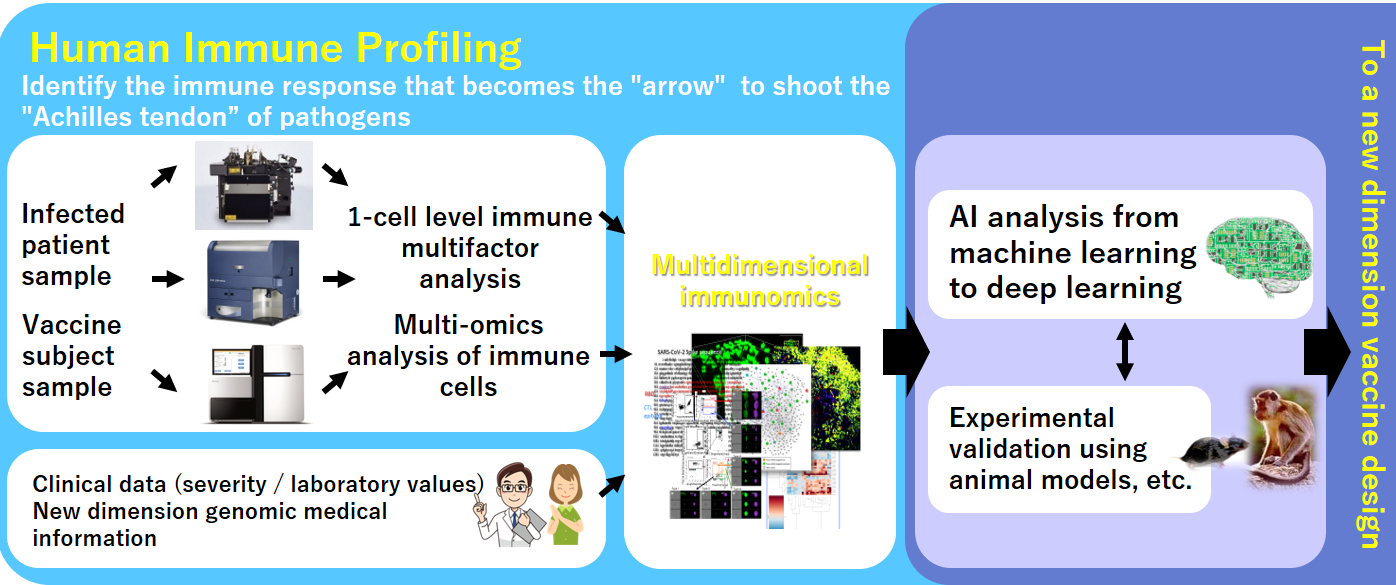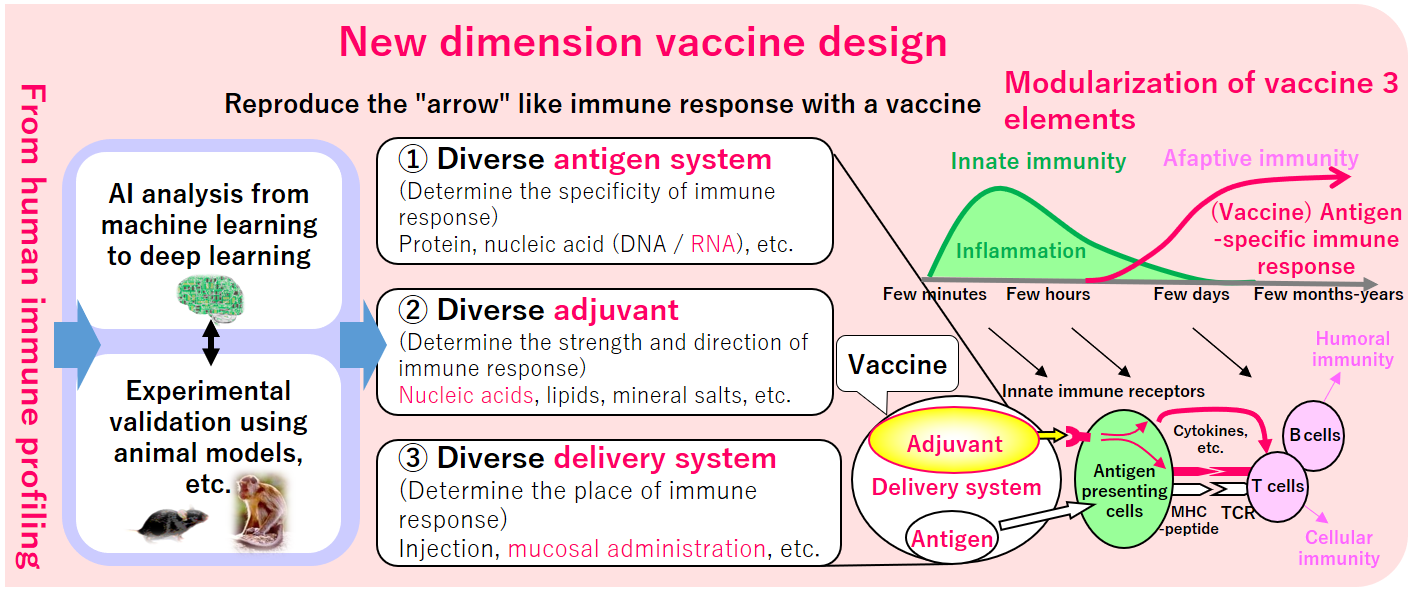Purpose of the project
Purpose and outline of the project
One of the reasons why vaccine development is difficult is that human immune responses to pathogens are extremely varied and, unfortunately, some responses are deleterious to the outcomes of treatment.
Therefore, it is important to promptly identify immune responses to aim at the “Achilles’ heel” of pathogenesis. For example, a detailed comparison of the immune responses of severe and mild/asymptomatic diseases will help us quickly and accurately identify important immune responses in the treatment process.
In this project, blood and other samples are collected over time from patients in different regions and with different severities of disease or vaccine subjects (Fig. 3).
Immune cells collected from the samples are separated into single cells and analyzed for immune-related factors. In addition, multi-omics data, such as transcriptome data, are collected over time, and a multi-layered and multi-dimensional database, called multi-dimensional immunomics, is constructed by incorporating clinical data, including severity of illness, laboratory results, and genomic information.
Based on this database, AI analysis ranging from machine learning to deep learning will be conducted to identify effective antigens and determine the immune responses related to successful pathogen defense.
We will experimentally verify whether the identified immune response works as a defense mechanism in mice and monkeys. Following clinical trials, we will finally collate all the data to establish a vaccine design.
Project Outline 1: Human Immune Profiling

We are able to identify optimal immunity through AI analysis and verification by animal experiments. Subsequently, the pathogen will be cultured using chicken eggs or cell conventional cultures; however, the desired immunity must be generated or the process will be reiterated.
To create a vaccine that induces the desired immune response, we propose dividing the vaccine components into three essential elements and create a combination that induces only the anticipated immunity (Fig. 4)
In other words, the “antigen system,” which determines the specificity of immunity, “adjuvant,” which determines the strength and direction of immunity, and “delivery system,” which determines the site of immunity, are individually developed and modularized and a system is developed to rapidly construct the optimal combination. This modularized vaccine design will accurately reproduce the immunity required for effective treatment.
Project Outline 2: New dimensional vaccine design
Reproducing the “arrow” immune response in vaccines

Modularization of the three vaccine elements
The Institute of Medical Science is already developing “mRNA vaccines” (one of the antigen systems), “immunotherapy using adjuvants,” and “mucosal administration vaccines” (one of the delivery systems) against potentially infectious coronaviruses, and is a world leader in the research and development of modularized vaccines.
In the field of adjuvants, in which we are specialized, we have a large number of clinically applicable modules, mainly nucleic acid adjuvants. We will utilize the available infrastructure to promote the rapid development of modularized vaccine technologies to meet diverse immunization needs.
